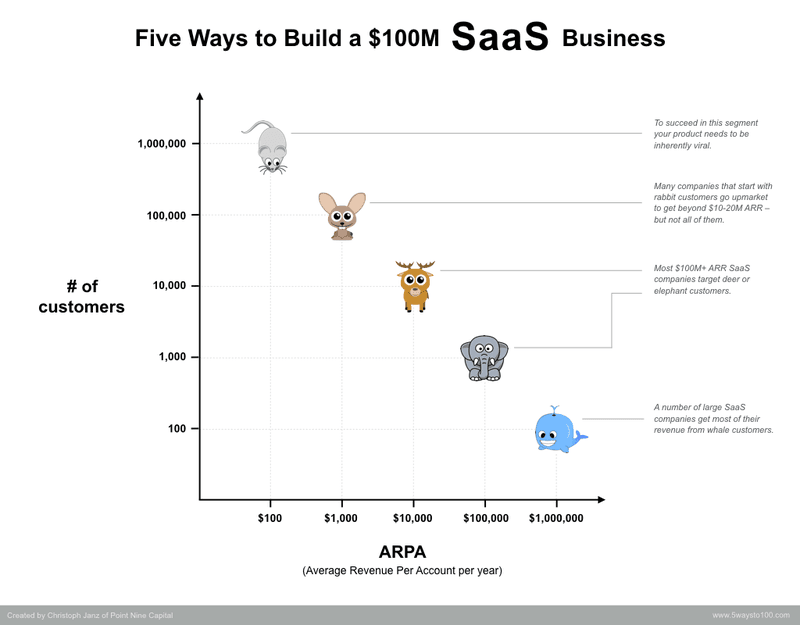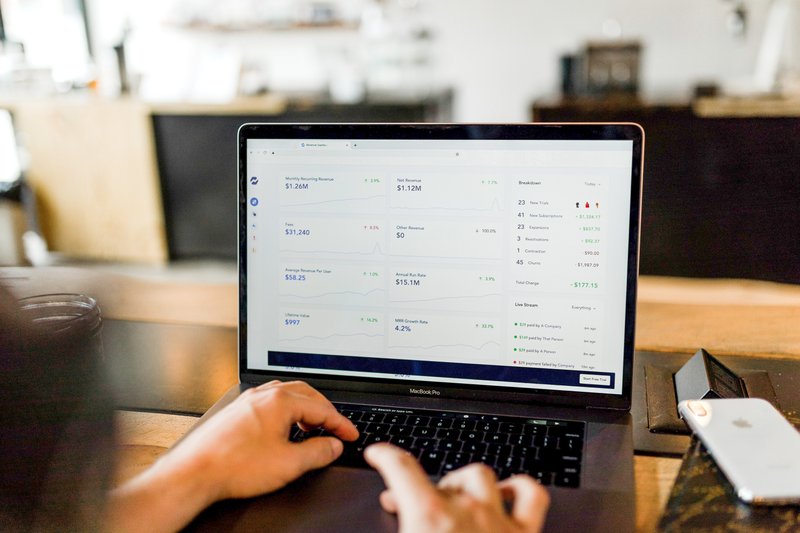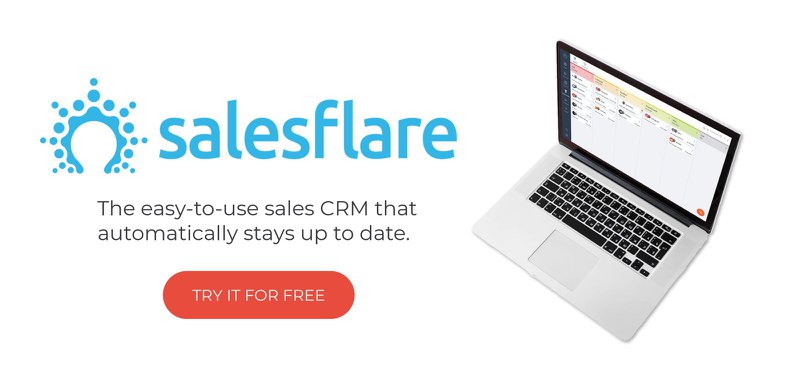Vendite SaaS: I fondamenti
Tutto quello che c'è da sapere per vincere nelle vendite SaaS
Want to learn all the fundamentals of SaaS sales in one go, without endlessly Googling around? 🎓
Then you’re in the right place!
We’ll cover the following points below (you can click to a specific one too): 👇
- Come si definiscono esattamente le vendite SaaS?
- Quali sono i diversi modelli in circolazione? (e le loro cicli di vendita e imbuti)
- Come avere successo: un manuale di strategia
- Una panoramica delle metriche più importanti nelle vendite SaaS
- Panoramica dei compensi comuni, stipendio, provvigioni e quote
- Dove è possibile rivolgersi per un'ulteriore formazione sull'argomento
If you have questions after that, feel free to ping us. We’re in SaaS sales every day, selling SaaS ourselves and helping customers with it too (we have software for it 😃).
Qual è il significato o la definizione di vendite SaaS?
Before we get started, let’s get the absolute fundamentals down first. What is SaaS sales exactly?
La vendita di SaaS è la pratica di vendere Software as a Service (SaaS) ai clienti. Poiché il SaaS si riferisce principalmente a software basati sul Web e venduti su abbonamento, si concentra soprattutto sull'acquisizione di nuovi abbonati e sul mantenimento e l'upselling degli abbonati attuali.
So what’s most distinctive about it is that you’re selling software and you’re selling subscriptions.
The fact that you’re selling software means that it can get a little technical at times, although that very much depends on the software’s complexity and ease of use.
The fact that you’re selling subscriptions means that you’re inherently in it for the longer term with your customers. Customers who subscribe and then quickly churn (no, we’re not talking about making butter but about canceling; we’ll get into some of the slang later) are not what you’re looking for.
3-5 diversi modelli di vendita SaaS
Ora, le vendite SaaS sono tutte uguali? Sicuramente no.
Nota: we’ll only focus on B2B sales here, as in B2C SaaS sales there’s hardly ever a sales team involved.
There’s huge differences between the different SaaS sales models:
- Vendite self-service: i clienti acquistano il software in gran parte senza alcun aiuto
- Vendite transazionali: the customers get help from the sales team, but buy quickly and don’t require a whole lot of different sales interactions
- Vendite aziendali: il processo di acquisto è piuttosto lungo e richiede molteplici interazioni con i diversi stakeholder dell'impresa.
And it ultimately comes down to the size of the “animal” you’re selling to.
Christoph Janz di Point Nine Capital, una società di venture capital specializzata in SaaS, distingue 5 diversi animali con dimensioni crescenti: topi, conigli, cervi, elefanti e balene.

Il tipo di azienda definisce in larga misura le vendite e la strategia commerciale in SaaS.
If you sell to mice 🐭, you can’t really employ a sales team. That would be too expensive. The whole sales process needs to be self-service. And the product needs to have some sort of virality built-in, because you can’t even spend much on attracting customers.
If you sell to rabbits 🐰, there still isn’t a lot of budget to do sales. Most of the process still needs to be self-service, although you could make a little effort to close a deal, but it can’t go beyond transactional sales. Essentially, sales should be closed in one call. Leads need to come inbound, through content marketing or ads.
If you‘re hunting deer 🦌, you’re in transactional sales territory. An inside sales force can close deals, and also help generate them to a certain extent. You however do need a large amount of leads, so marketing will play a very important role in lead generation.
If you’re hunting elephants 🐘, that’s when you’re selling expensive subscriptions to large enterprises. You’re doing enterprise sales. With the margins you’re generating per customer, there’s no problem to go visit them, so you can do slightly more classic field sales.
Finally, if you’re after whales 🐳 (probably not exclusively), you better get strategic about your enterprise sales approach.
Durata media del ciclo di vendita SaaS
Based on the classification of SaaS sales customers into different animals, you can probably tell already that some average sales cycle lengths are going to be longer than others. ⏱️
The best data we’ve found on this topic is from Matt Bertuzzi of The Bridge Group on Quora:
- Conigli (ACV < $5k): 1,3 mesi (40 giorni)
- Piccolo cervo (ACV $5-10k): 2 mesi (62 giorni)
- Cervo grande (ACV $10-$50k): 2,8 mesi (84 giorni)
- Piccoli elefanti (ACV $50-$100k): 3,8 mesi (117 giorni)
- Elefanti e balene di grandi dimensioni (ACV >$100k): 5,5 mesi (169 giorni)
Questi numeri si basano su ricerche effettuate da Matt presso 305 aziende, ma sono ovviamente solo indicazioni. Alla Salesflare, vendiamo soprattutto a conigli e piccoli cervi e la durata media del nostro ciclo di vendita è di soli 22 giorni.
Quanto più facile è per i clienti iniziare e acquistare, tanto più breve è il ciclo di vendita.
If you’re offering a trial (most common when selling to mice, rabbits or deer), you can also experiment with making the trial’s length shorter, or even with making it variable.
At Salesflare, we’re now offering a trial that starts with 7 days and awards you more days (up to 30 days, and even longer for larger teams) as you set up the software.
Prima di introdurre questa prova con durata variabile, offrivamo una prova gratuita di 14 giorni con la possibilità di estenderla per 7 giorni dopo la sua scadenza. Il nostro ciclo di vendita medio si accorciava di 3 giorni, attestandosi intorno ai 19 giorni (ma i nostri tassi di conversione erano più bassi).
Circa il 30-40% delle persone che ora si abbonano a Salesflare lo fanno intorno alla scadenza del periodo di prova (al massimo 1 giorno prima o dopo). Un altro 40% si abbona più di un giorno prima della scadenza della prova. 20-30% ha bisogno di un po' più di tempo per organizzarsi dopo la fine della prova.
Imbuto o processo di vendita tipico di un SaaS
Your sales funnel and sales process might also look very different depending on the size of the contracts you’re selling.
When it comes to smaller deals (mostly mice and rabbits) the AAARRR pirate funnel 🏴☠️ tends to be quite popular:
- Consapevolezza: le persone visitano il vostro sito web
- Acquisizione: si iscrivono a una prova
- Attivazione: iniziano a utilizzare il software
- Retention: continuano a usare il software
- Entrate: vi pagano per usare il software
- Referral: indirizzano altre persone verso il vostro software.
At Salesflare, we’ve expanded on this marketing-sales funnel framework a bit to reflect our focus on content marketing and on long-term retention, turning AAARRR into AAAAARRRRR:
- Attrazione: le persone visitano il vostro blog
- Pubblico: persone che visitano ripetutamente il vostro blog
- Consapevolezza: le persone visitano il vostro sito web
- Acquisizione: si iscrivono a una prova
- Attivazione: iniziano a utilizzare il software
- Prove di fidelizzazione: i clienti continuano a utilizzare il software durante la prova.
- Crescita dei ricavi: iniziano a pagarvi per usare il software
- Abbonamenti di mantenimento: continuano a utilizzare il software durante l'abbonamento
- Referral: indirizzano altre persone verso il vostro software.
- Entrate: vi pagano per usare il software
Quando si vendono animali di grandi dimensioni (come cervi ed elefanti), di solito si suddivide l'imbuto di vendita come segue:
- Marketing qualified lead (MQL): il marketing riceve un lead che ha lasciato informazioni di contatto e che sembra adatto a lui.
- Lead qualificato dalle vendite (SQL): le vendite parlano con il lead e lo qualificano come uno a cui vendere
- Opportunità di vendita (può avere sottofasi come demo programmata, demo data, proposta fatta, ecc.): le vendite guidano il lead attraverso il processo di acquisto
- Accordo chiuso: le vendite chiudono l'accordo
Un'altra strategia (soprattutto per conigli e cervi) è stata quella di affidarsi maggiormente ai dati e all'uso del prodotto per qualificare i contatti. Si parla spesso di product qualified leads (PQL).
Finally, whichever model you’re in, from a higher level perspective your team has three main responsibilities in the longer run 👇:
- Onboard: far sì che le persone siano adeguatamente configurate e addestrate all'uso del software.
- Mantenere: assicurarsi che le persone continuino a trarre valore dal software e rimangano abbonati.
- Espansione: upselling e cross-selling di licenze sempre più costose.
Now, let’s explore the SaaS sales playbook in more detail.

Un libro di strategia: come uccidere nelle vendite SaaS
1. Obiettivo, qualificazione, ottimizzazione dell'obiettivo
Il modo migliore per vendere di più con la stessa dimensione del team di vendita (o per massimizzare il ritorno sugli investimenti nelle vendite) è ridurre al minimo la quantità di tempo spesa per i lead sbagliati.
It’s extremely important to be very clear about who’s the right target for your SaaS, in its narrowest sense. 🎯 To “find your niche”, as people tend to call it.
These days more than ever, and especially in SaaS sales, you can find an enormous amount of information about the leads you’re targeting without even talking to them. Compiling a hyper-targeted lead list should be your first filter when you’re trying to predict the answer to the question “will they buy?”.
In seguito, quando siete in contatto con loro, continuate a filtrare. Cercate di qualificare il lead il prima possibile e nel miglior modo possibile. Questo significa ancora una volta prevedere la loro probabilità di acquisto, questa volta ponendo le domande giuste.
If a lead isn’t qualified now but might be in the future, hand them over to the marketing team for nurturing and/or simply schedule a reminder to follow up. Some of the best deals don’t happen immediately but need some time to convert.
While doing all this over and over, you’ll inevitably learn more about targeting and qualification. Use this to improve your process and keep iterating on it.
E se volete trarre ulteriore ispirazione, cliccate su uno degli articoli collegati della nostra Sales Pipeline Masterclass.
2. Allineare marketing e vendite 100%
While many traditional companies can still afford running their marketing and sales teams in different silos, SaaS companies can not. Especially not in companies selling to rabbits and deer (if you’re confused by the weird animal references, go back and read the previous section on SaaS sales models 😆).
In queste aziende, i team di marketing sono di solito:
- Generare nuovi contatti per il team di vendita
- Cura dei contatti in fase iniziale o temporaneamente squalificati
- Creare materiali per favorire l'onboarding, stimolare le vendite e ridurre il churning
Tutto questo è strettamente legato a ciò che fa il team di vendita, quindi una buona/ottima collaborazione tra marketing e vendite è estremamente importante.
I due errori più comuni a questo proposito sono:
- Gestire il team di marketing e vendite sotto una guida separata
- Using a CRM that sales people don’t fill out for 100%
Il primo problema è piuttosto facile da risolvere: gestite i team di vendita e marketing come un unico team, come un unico team di revenue o growth. Nominate un vicepresidente delle vendite e del marketing o un CRO.
The second issue is a harder one. If your sales team doesn’t update the CRM diligently, entering every single customer detail and interaction in there, the collaboration is bound to fail. Leads might not be handed over from the one to the other team correctly (with leads ending up abandoned), or they might be targeted by both teams at the same time (imagine your best lead being targeted with a big promo by the marketing team, costing you a lot of revenue/commission).
That’s why it’s crucial to get a CRM that makes sales people want to use the CRM. One that is easy to use, built from the ground up for automated data input rather than manual data input, and actively helps your sales team with following up their leads. You know, like Salesflare. 😏
3. Concentrarsi sull'onboarding
Un ottimo onboarding è fondamentale per due motivi:
- Questo massimizza il vostro tasso di conversione da prova a pagamento, in quanto è probabile che più persone inizino a usare seriamente il vostro software.
- Riduce al minimo il numero di abbandoni, in quanto le persone che sono state inserite in modo migliore possono trarre maggior valore dal vostro software.
To the second point, we’ve seen in our own data that the quality of the onboarding during the trial (so during the first few weeks on the software) has a significant effect on the churn in the long term, with some of the steps in the onboarding process lowering the churn by about 40-50%. 😮
There’s of course only so much you can do here as a sales team (especially when selling to mice or rabbits) so make sure you work closely with the product team to keep improving the product onboarding as a #1 priority.
Some of the things you can consider doing that don’t really need the product team are:
- Formazione del team sull'uso del prodotto
- Assistenza nelle integrazioni e nelle importazioni di dati
- Costruire una stretta relazione con i vostri clienti, concentrandosi sull'aiutarli a superare ogni singolo ostacolo e domanda lungo il percorso.
Personalmente ritengo che l'onboarding sia il punto in cui le migliori aziende SaaS si differenziano dalle altre.
4. Quando si è a bordo, identificare le possibilità di upsales.
Volete aumentare la quantità di denaro che guadagnate con ogni cliente come azienda SaaS? Allora l'upsales è il luogo in cui avviene.
Some of the most successful SaaS companies are the ones who are most active in this area. They’ll keep identifying new opportunities to offer more value to their customers. And then charge them more when they do.
It is one of the easiest ways to increase your revenue in the short term, but it is also one of the most dangerous ways to hurt the relationship with your customers in the longer term. 🤑
Some SaaS companies lure in customers with promises of huge discounts, lock them into contracts and software set-ups, and then start charging them more with aggressive price increases that don’t correspond to the extra amount of value added to the customer. If you care about more than short-term gains alone, it’s best to steer clear from this way of dealing with people.
Finché voi stessi e il vostro team di vendita vi concentrerete sul lungo termine, offrire più valore ai clienti e far pagare un importo ragionevole in cambio è uno dei modi migliori per avere successo nelle vendite SaaS.
5. Prevenire il churn prima che si verifichi
What’s the single most impactful thing a SaaS company can do to increase its sales growth? That’s right: preventing churn. 😄
And actually, the 4 strategies we’ve covered so far will contribute to reducing that churn. Because what’s better to keep subscribers happy than:
- Iscrivere solo quelli giusti
- Servirli come un'unica squadra
- Il loro onboarding è il migliore possibile
- Rimanere sempre concentrati nell'offrire loro più valore
But that’s not all you can do. You can also:
- Tenere traccia dei bug e dei potenziali miglioramenti, risolverli e comunicarli.
- Costruire un rapporto di fiducia con i clientiCosì sapranno che possono sempre contare su di voi.
- Controllate di tanto in tanto se c'è bisogno di aiuto.
- Monitorate il loro utilizzo e contattateli quando calano.
Tracking the right data, keeping it organized and acting upon it is key here, which neatly brings us to the sixth and last strategy in the playbook. 👇
6. Utilizzare i dati e la tecnologia al massimo delle loro potenzialità
La più grande opportunità che le aziende SaaS hanno rispetto alle aziende tradizionali è l'abbondanza di dati e la facilità di introdurre tecnologie per tracciarli e tenerli organizzati.
Quindi cogliete questa opportunità! E utilizzate il software di altre aziende SaaS per potenziare le vostre vendite.
Here’s some interesting products that can make a huge difference to your SaaS sales:
- Salesflare – of course – can help you with perfectly keeping track of your customers without inputting any data. It tracks recurring revenue like no other CRM, can send automated email sequences/flows, and has the closest possible integration with your G Suite or Office 365 inbox and calendar. We’re biased, but we also know our target audience. And that audience contains a lot of SaaS companies. 😄
- Intercom is the best built live chat and support system around. You can also use it to send onboarding emails, show product tours, and much more. (They have a lot of upsales going on. 😉)
- Segment può aiutarvi a tracciare e organizzare i vostri dati tra le varie app con una quantità minima di lavoro. Tracciate le cose una volta sola, utilizzate i dati ovunque.
- Acute è il nostro strumento preferito per tracciare il feedback dei clienti. Collega i feedback alle persone, visualizzando essenzialmente la connessione tra Intercom e Github per noi.
- RingBlaze è uno dei migliori sistemi telefonici aziendali. Offre molteplici funzioni come la registrazione delle chiamate e le chiamate di gruppo, assistente automaticoecc. Offre anche un widget per le chiamate dirette che potete integrare nel vostro sito web. Questo widget consente ai clienti di collegarsi direttamente con voi con un semplice clic.
- Infine, ma non meno importante, Zapier è ciò che serve per integrare le cose tra gli strumenti.
There’s obviously many more products around, but those are some of the key ones we use ourselves to stay maximally organized in sales.

Le metriche di vendita SaaS più importanti
There’s a lot of SaaS metrics around, so let’s focus on the most important ones you’ll need to understand to know how your business is doing. 📈
MRR / ARR: Le vostre entrate ricorrenti mensili o annuali rappresentano l'importo che ricavate mensilmente o annualmente dagli abbonamenti.
Tasso di crescita del MRR (lordo vs. netto): The gross MRR growth rate is a percentage that represents the amount of new MRR you generate in a certain month, divided by the MRR you had in the previous month. To calculate the net MRR growth rate, you need to add in the MRR growth from existing customers as well (usually negative, hence the “net”), i.e. reactivations + expansion – contraction – churn, and again divide this by the MRR from the previous month.
Churn (lordo vs. netto, clienti vs. ricavi): La quantità di clienti o di entrate perse in un determinato periodo. Il churn dei ricavi lordi rappresenta la perdita di ricavi dovuta ai clienti che annullano l'abbonamento. Il churn dei ricavi netti è il churn dei ricavi lordi compensato dagli effetti dell'espansione e della riattivazione. Per ottenere l'importo percentuale, dividere per il MRR alla fine del periodo precedente.
ARPU o ARPA: Il ricavo medio mensile per utente o account. Il modo più semplice per calcolarlo è dividere il vostro MRR per il numero di clienti paganti che avete.
CAC: Il costo di acquisizione del cliente è il costo complessivo sostenuto per acquisire un cliente.
LTV: L'importo medio di denaro guadagnato da un cliente durante la durata dell'abbonamento.
Rapporto CAC/LTV: L'importo percentuale del vostro LTV that you need to spend to acquire a customer. It’s a measure for the return on investment of your sales efforts.
Periodo di ammortamento del CAC: La quantità di mesi di ricavi di cui avete bisogno per recuperare il vostro CAC, ovvero la velocità con cui riuscite a chiudere in pareggio il vostro investimento nelle vendite. Per calcolare questo dato in modo rapido e sporco, dividete il vostro LTV per il vostro ARPA e moltiplicatelo per il vostro margine lordo percentuale.
Retribuzione: stipendio comune, commissioni e quote
Selling SaaS can be quite a lucrative job. 💵
Secondo Bridge Group, per gli account executive (AE) SaaS negli Stati Uniti nel 2020:
- Lo stipendio medio annuo è di $158K (quando si raggiunge la quota), con una ripartizione 50:50 tra guadagno base e guadagno variabile. Si va da $95K quando si vendono conigli a $215K quando si vendono grandi elefanti e balene.
- La quota media è di $775K in valore contrattuale annuale (ACV). Questo valore varia da $350K quando si vendono conigli a $1200K quando si vendono grandi elefanti e balene.
- Con 100% di quota, il tasso medio di commissione sulle nuove attività è pari a 10% di ACV. I rinnovi vengono solitamente pagati a un tasso inferiore (in 55% dei casi), mentre l'espansione viene solitamente pagata allo stesso tasso (in 85% dei casi).
- Circa 65% dei rappresentanti di vendita raggiungono la loro quota.
Naturalmente molti posti di lavoro si trovano ancora in California, dove il costo della vita è molto alto, quindi prendete questo dato con le molle.
E per il lettore europeo che non ha familiarità con gli stipendi statunitensi: negli Stati Uniti la sanità e l'istruzione non sono (quasi) sovvenzionate dal governo.
Come continuare a imparare ed eccellere nelle vendite SaaS
There you have it: the fundamentals! But there’s so much more to learn. 🎓
Here’s a few things I can recommend you check out if you’re ready to go deeper:
- Ascoltate alcuni buoni podcast sulle vendite oppure interviste ai fondatori di SaaS.
- Leggi i top sales books
- Regalate a voi stessi o al vostro team un po' di formazione-alle-vendite.
- Date un'occhiata alla nostra masterclass sulla pipeline di vendita.
- Or dig in deeper and read about building a solid sales pipeline, setting sales quota correctly, selling remotely, sending personalized emails at scale, …
Inoltre, sentitevi liberi di contattare me e il team se posso/possiamo aiutarvi.
Good luck and go kill it! 👊

Speriamo che questo post vi sia piaciuto. Se vi è piaciuto, spargete la voce!
👉 You can follow @salesflare on Twitter, Facebook and LinkedIn.
- 8 vantaggi del CRM + 6 sfide da superare prima - 18 aprile 2024
- 30+ Migliori strumenti di generazione di lead (per tipo) - 16 aprile 2024
- 7 migliori CRM per Google Workspace + caratteristiche di integrazione - 11 aprile 2024
